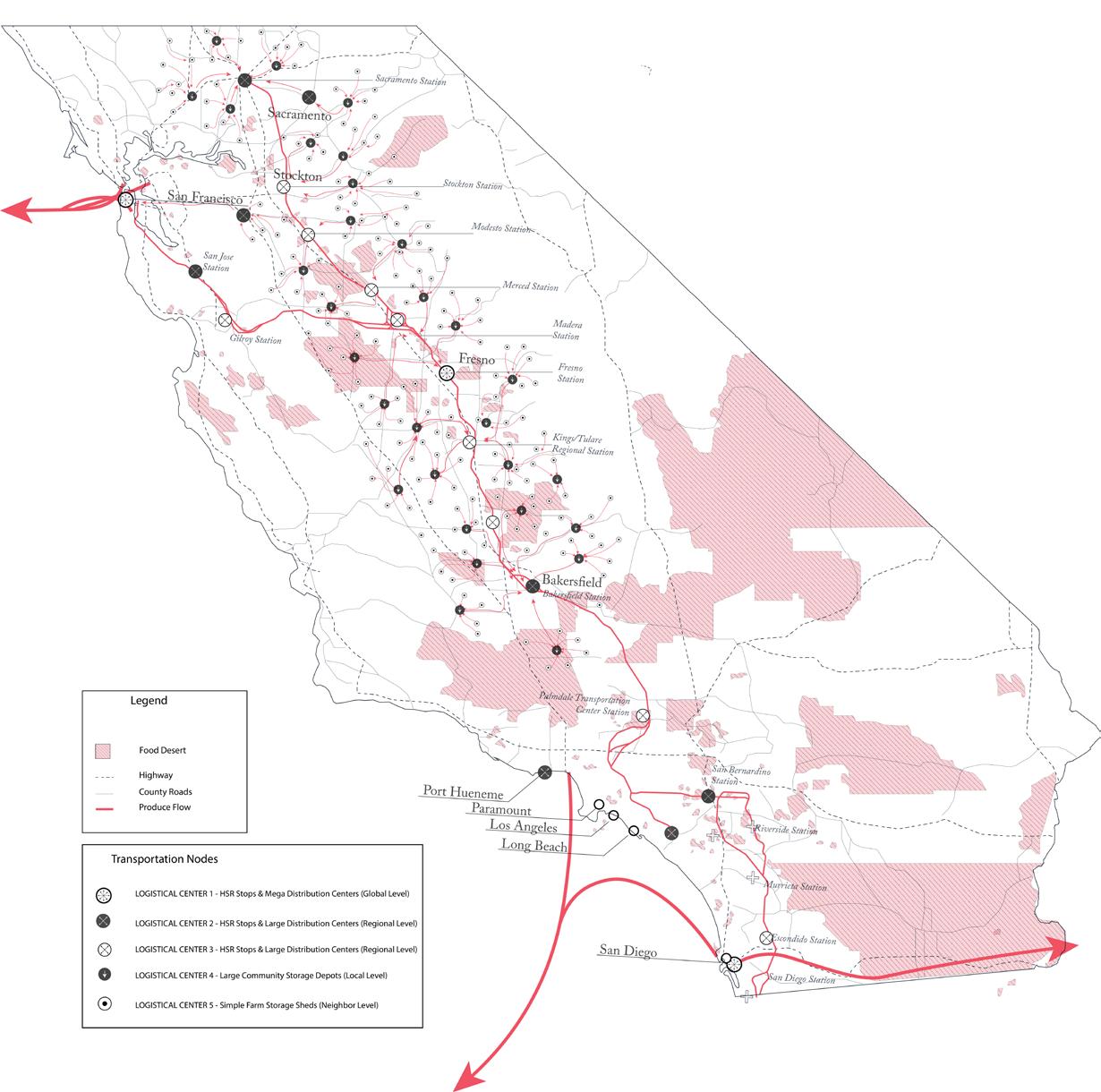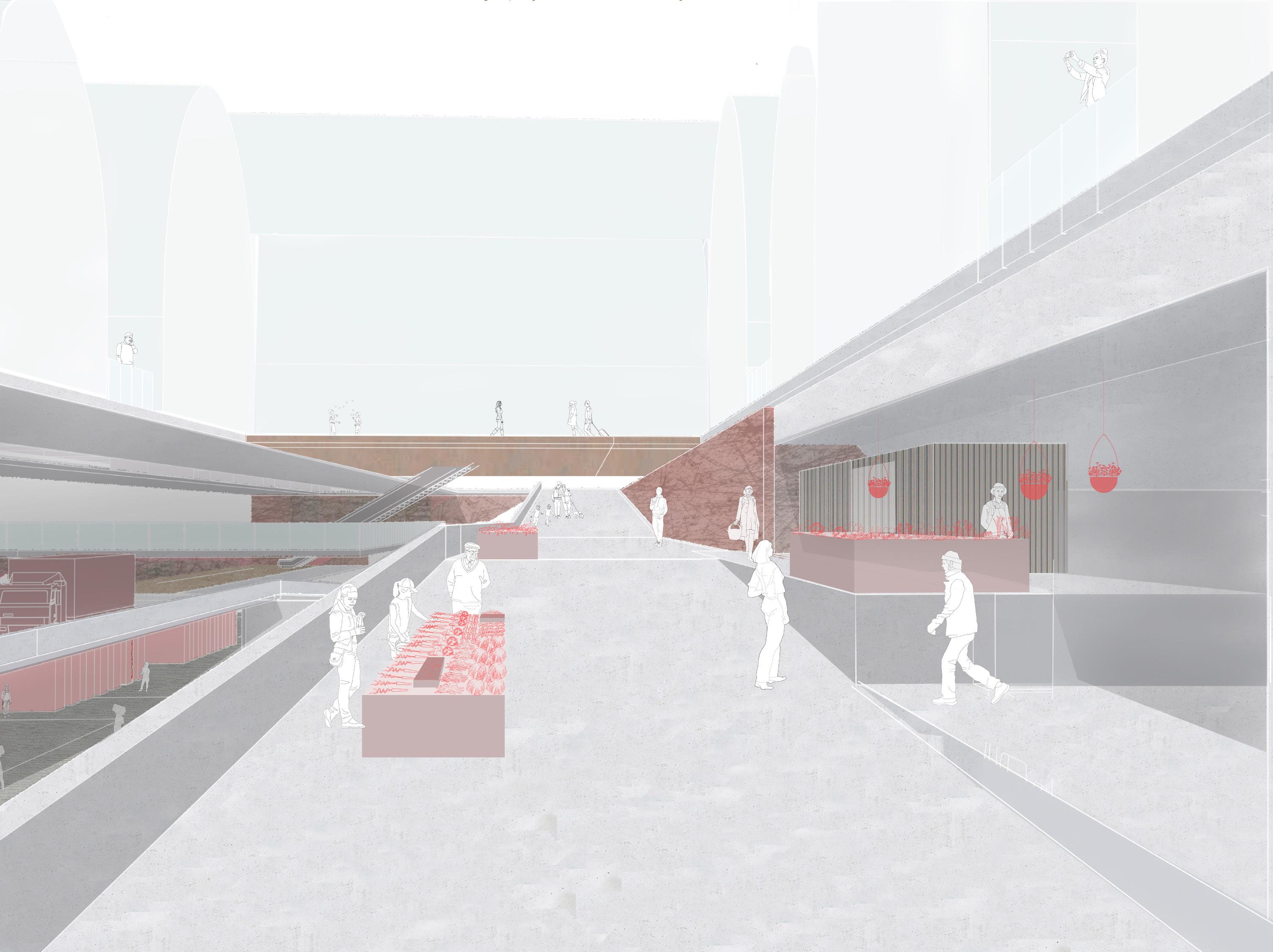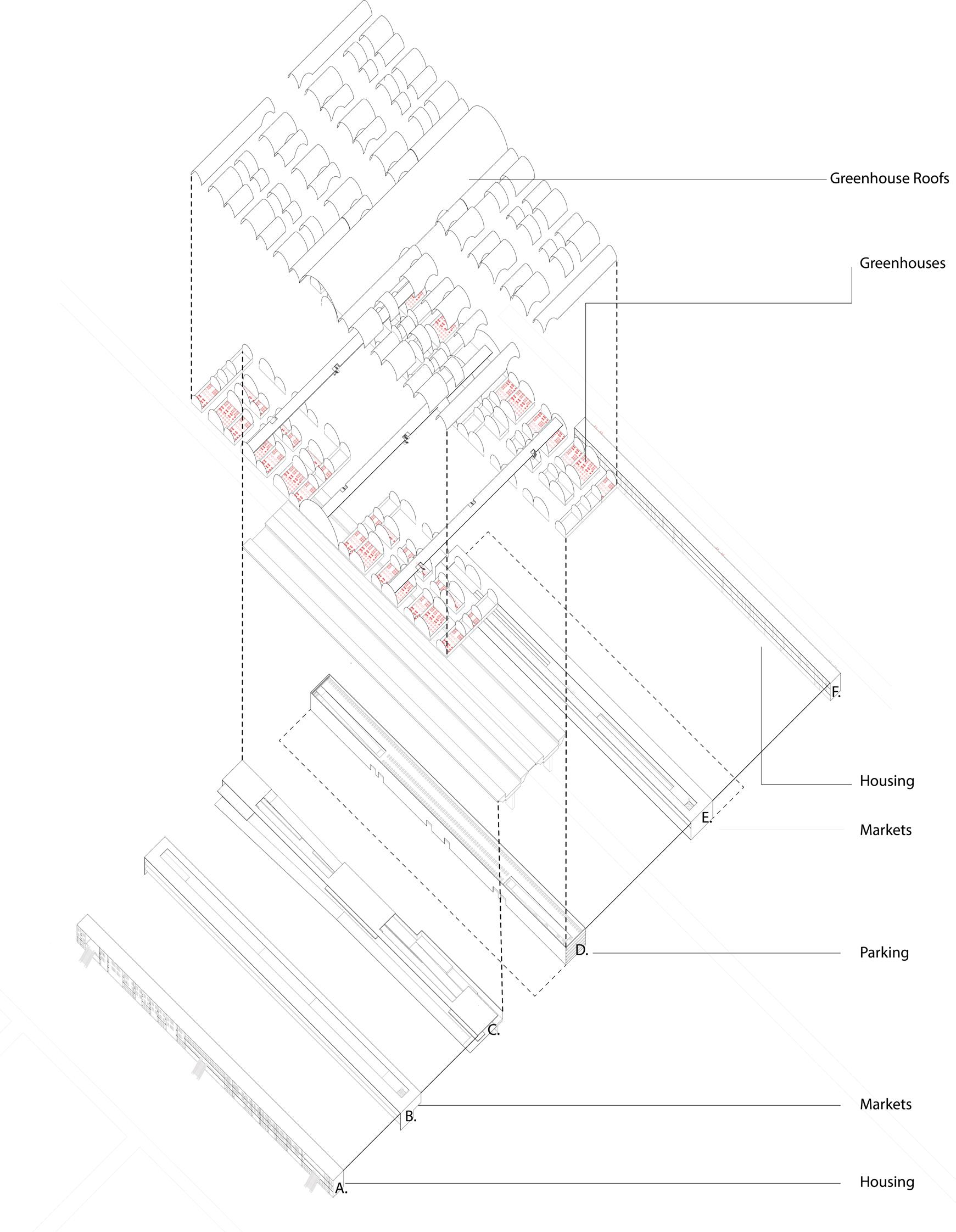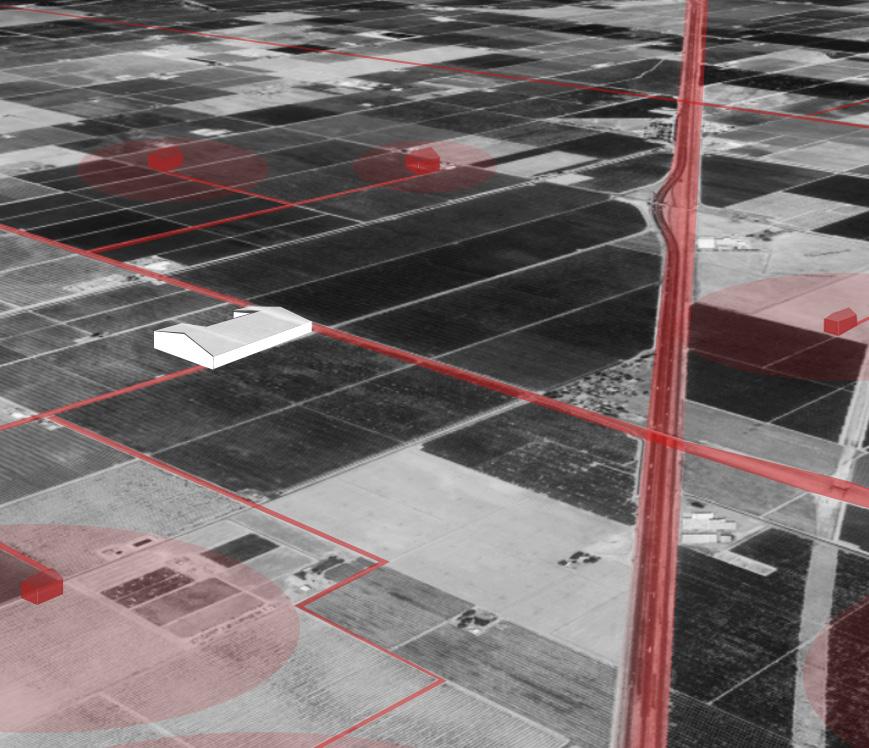
1 minute read
The Food Belt: Investigations in Food
& Transportation Infrastructure
DESCRIPTION: propose to leverage the California High Speed Rail stops as logistics nodes (what we call L1-L5) and embed in the central spine of a new foods logistics web that allows food to linger longer in the valley communities while sustaining overall time requirement. This retools the current stations into food logistics warehouses, community centers, and housing while retaining its transportation hub requirements. This new configuration will help to eliminates food deserts by allowing public access/siphoning of the food at the station proper.
Advertisement
The Food Belt focuses on the disparity between California’s Central Valley’s large agricultural output and its inability to provide fresh/healthy food options at an affordable price to the people that feed the rest of the country. The current configuration of food logistics systems, privileges maximum efficiency that starts at the farm and ends in the city centers of Los Angeles and San Francisco while completely bypassing the communities of the valley.
Currently produce remains at local farms from 1 to 2 hours while it is loaded onto trucks, often gas guzzling refrigerated units, these 2 hours will be the only contact the food has with the community that grew it. The next 5 to 6 hours will be spent traveling down the I99 or I5 highway, all while continuing to pollute and bypass massive swaths of agricultural communities. From here the produce will either arrive at a large logistics center in either SF or LA where it will remain for 1 to 2 days until picked up and sent to it final destination of either restaurant of markets.
















